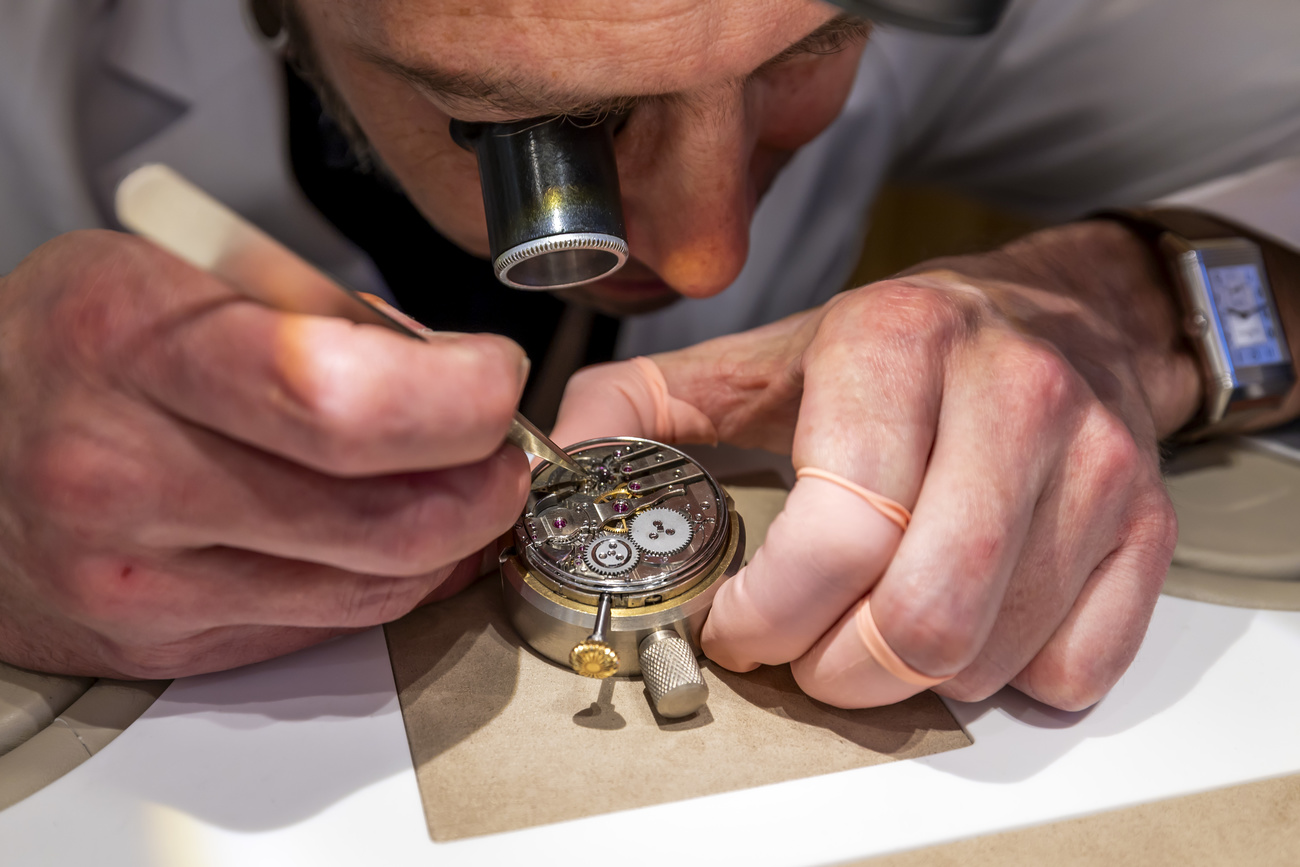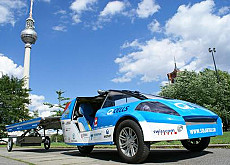Alinghi scientists get on board “flying boat”

Scientists at the Federal Institute of Technology in Lausanne are confident their knowledge will help break the 50-knot (92.6km/h) "sailboat sound barrier" this year.
Experts at the institute, who helped Switzerland’s Alinghi team retain the America’s Cup at the beginning of July, have been working on the Hydroptère, the world’s fastest sailing boat, for two years.
“Hydroptère is the fruit of 15 years of work with specialists of this kind of boat,” Pascal Vuilliomenet, project coordinator at the institute, told swissinfo. “What we are providing is a bit more scientific support in order to push the limits.”
Alain Thébault, a 45-year-old Breton, has been obsessed by the idea of a “flying boat” since he was a child and came up with an initial concept in 1975. Various prototypes were launched throughout the Eighties and Nineties but technical problems made it hard to attract sponsors and the project was on the verge of sinking.
In 2005 Thébault turned to Patrick Aebischer, president of the Federal Institute of Technology in Lausanne, and Thierry Lombard, a Geneva banker and sailing enthusiast.
Both were fascinated by Thébault’s ambitious goal of breaking the 50-knot “sailboat sound barrier” and they jumped on board.
Travelling more than twice as fast as a single-hull sailboat such as Alinghi, the Hydroptère – “water wing” in Greek – already has several world speed records to her name and is expected to crush existing transatlantic and round-the-world sailing records.
Showcase
The Hydroptère concept is to minimise the friction from the water and waves. With the wind blowing at only 12 knots, the hull of the 24.5-metre wide trimaran lifts almost 1.5 metres above the water, skimming the surface of the waves with the tips of her wings.
These two hydrofoils set at angles on the Hydroptère’s arms provide side stability, while a T-shaped foil on the rear of the central hull acts as the rudder. An onboard computer linked to 67 sensors analyses stress on the hull, hydrofoils and other components.
When the boat is “flying”, only two square metres are in touch with water.
“[The Hydroptère] is a showcase for the technology that has been developed at the institute,” Vuilliomenet said. “For us it’s really a technology platform. We know the Hydroptère is not a market by itself, but once we’ve shown that the technology works, we can then transfer it to different companies that might be interested.”
Win-win situation
Vuilliomenet also worked on Alinghi and sees similarities between the two projects.
“The philosophy of the project is similar,” he said, adding that the institute has been involved in three “transdisciplinary, highly demanding” projects.
“Alinghi was one, Hydroptère was one and Solar Impulse [Swiss explorer Bertrand Piccard’s plan to fly around the world in a solar plane in 2011] is one. The way the projects are organised is very similar – it’s not the same topics, but the dynamics and the motivation and so on are the same,” he said.
“What’s more, in these projects we gain knowledge from Hydroptère, so it’s really a two-way exchange of information. It’s a win-win situation.”
Need for speed
Hydroptère will be aiming this winter to break the 50-knot barrier, but she is already the fastest sailing vessel over one nautical mile (1.852km).
On April 4 she covered the distance with an average speed of 41.69 knots. Windsurfer Björn Dunkerbeck had set the previous record in 2006 with an average speed of 41.14 knots.
Vuilliomenet denies there is a real risk of the “flying boat” actually taking off at such speeds.
“Of course when you are pushing the limits – especially when it comes to speed – you have to be cautious,” he said. “But that’s when experience coming together with science is very important.”
swissinfo, Thomas Stephens
The Federal Institute of Technology, located on the outskirts of Lausanne, is home to 10,000 students, researchers, academic and administrative staff.
The institute offers 13 complete study courses in engineering, basic sciences and architecture as well as a masters program in technology management.
More than 100 nationalities are represented on campus and half the teaching staff is foreign.
1975: A team of aeronautical engineers, aircraft part manufacturers and sailors convince “father of French yachting” Eric Tabarly of the Hydroptère’s viability.
1987-1992: Alain Thébault builds and adjusts a model on a one-third scale.
October 1, 1994: Hydroptère’s first flight.
2004: installation of the strain absorbers by André Sournat that ensure the structure’s strength.
February 9, 2005: The symbolic record across the Channel set by Louis Blériot in 1909 is smashed by Hydroptère in 34 minutes and 24 seconds with an average speed of 33 knots.
April 4, 2007: Hydroptère sets two world records: fastest sailing vessel over one nautical mile with an average speed of 41.69 knots, and fastest over 500 metres in category D (sail surface area over 27.88 m²) with an average speed of 44.81 knots.
Length: 18m
Span: 24.5m
Mast height: 27m
Length of the lateral foils: 6.5m
Rudder height: 3.6m
Main sail: 165 m²
Mass when taking off: 6.5 tonnes (five-person crew)
Mass when navigating: 7 tonnes (800kg of ballast wind)
Minimum wind speed necessary to take off: 12 knots
Maximum speed: 50 knots

In compliance with the JTI standards
More: SWI swissinfo.ch certified by the Journalism Trust Initiative











You can find an overview of ongoing debates with our journalists here . Please join us!
If you want to start a conversation about a topic raised in this article or want to report factual errors, email us at english@swissinfo.ch.